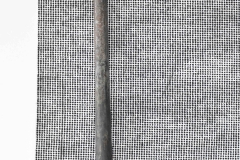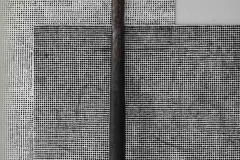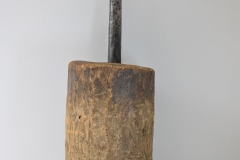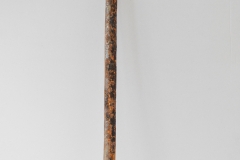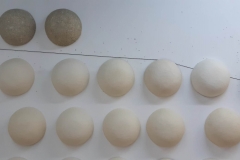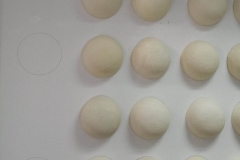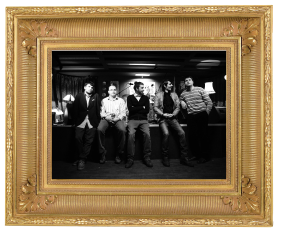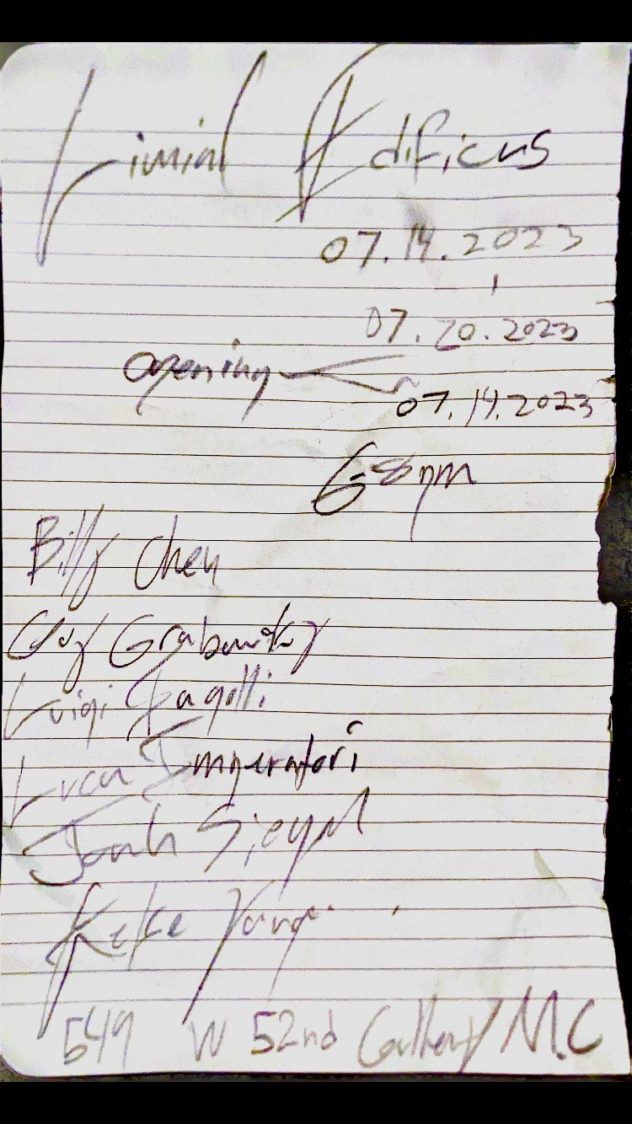“Database” by Marija Micova Gacova
Saturday, July 8th from 6 to 8 pm
Gallery MC
545 West 52nd Street, New York, NY 10019
INDIVIDUAL MEMORY EMANATION
Towards the project “Database” by Marija Micova Gacova
Ana Frangovska, MA, art historian
Memory, database, growth ring, binary system, code, genetic code, meme, anagram, algorithm, sign… Exhaustively aligned terms, seemingly different, but an analysis, a link between these reveals a new simulacrum divulging information, congenial or acquired, real or virtual, human or electronic, spiritual or spatial. Forms resembling stored data, which when zipped (to turn to the current digital vocabulary) and decoded open a discussion on genesis, origin, affiliation, communication, transcription.
Lana and Lily Wachowski’s The Matrix (1990) presented a dilemma on the origin of information, on natural versus artificial intelligence, and the space/time correlation, now and here, or in another dimension. Although the film belongs to the science fiction genre, the dilemmas proposed, with the passing of the 21st century, become even more relevant. Three decades after the first film, an encounter with Marija Micova Gacova’s work triggered similar thoughts about the origin of information, the correlation between spiritus loci and spiritus saeculi, i.e. the space and time of the spirit, the origin of data and how they are memorized, remembered or erased and transformed to a different form, about genetic codes, congenial data, culturally and socially carried information and so on.
The crucial, primordial element in Micova Gacova’s project entitled “Database” is a dot, which like a condensed memory, a code element, carries information of different kinds (verbal, visual, written, reflective, sensory). The systematically aligned “dot” shapes the basal momentum, the code, enabling a wider range of communication through space and time. “Database” analogically emanates from her previous artistic polemicum “Collective Database”, solved in a two-dimensional artistic medium – paper and experimental drawing techniques. The art works resemble visualized digital codes waiting to be decoded and interpreted, only to be transferred to the next carrier of information.
Micova Gacova absolves the challenge of spacing the two-dimensional micronarrative, in a three or multidimensional macronarration in her “Database”, while information, i.e. the databases, once the collective becomes dissolved, are now personal, intimate, self-identified. The two-dimensional comfort is exchanged for a spatial paradigm demanding concision and contextuality and experiencing the elements’ playfulness in a pure, sophisticated aesthetic and formal manner, elements often intentionally scattered, due to “interruptions” in the decoding and the visual emphasis. The last element is the transformation from an introverted spacing of intimacy into extrovert sharing of information and data into the air, in the form of releasing the captured memory and its reflection.
A more detailed analysis reveals that one of the matrixes, one of the project’s dimensions is solved in the spirit of the “Collective Database”, the difference being that now instead of paper the medium is vast white surface, a wall, onto which a systematized informative memory is created. In order to create the aligned system, Micova Gacova utilizes a net as a pattern – a mold, drawing the code/s’ elements with a black acrylic paint, generating the circles, painting the empty spaces in the net. The entire wall resembles a textual matrix carrying an abundance of condensed information.
The second, parallel dimension, the other part of the project, encompasses a schematic composition of spaced “dots” – hemispheres made in the papier mache technique by applying a plastic mixture to shape the hemispheres out of unused paper stored for over 50 years, which although empty carries appropriate restrained information, i.e. information supposed to be written. The past has left data which was abstained. Micova Gacova’s system for determining how to “align” these salient dense energies of information abide by an instinctive and visual spacing of the poem “The Oak Tree” by Blaže Koneski. The algorithm follows the logic the artist relates to the poem, a visual harmony disrupted with a straight line or a word, or even a punctuation mark when threatening to become too monotonous. The entire wall covered with whitish hemispheres, aligned to mark an informative coded map, resembles a text written in the Braille alphabet, making the multidimensionality of the context more fundamental and founded.
The database reflects in the space between the two parallel universes. It is here that the artist places highly polished semi-spherical stainless steel objects, the glow achieved by manually polishing these readymade elements – tanker bottoms. The smaller one is facing the ground, as an extension of the paper codes, while the other, the larger one is facing upwards, with the intention to emanate information and share the memory in time and space.
Additional spatial elements incorporated in the spatial contextual panopticon are two unique family objects, passed on generation to generation with the intention to achieve a direct, figurative or literal transfer of memories with the other condensed data. One tool is placed on the convex stainless steel vessel, symbolically alluding to a club meant to “hit” the vessel’s surface in order to supply the module of information. The other tool rests on the two-dimensional matrix, serving as an element to “shift” or “enter” another dimension.
A final, unifying segment of Marija Micova Gacova’s project “Database” is the brief video entitled “Being My Place”, a documentary aiming to introduce the project’s recipient to some of the conceptual matrixes and causality of the project, as well as to untangle fragments of the complex creative process of producing the art work.
Instead of a conclusion, we can deduce that Marija Micova Gacova’s latest project is quite current, raising crucial relevant questions on our reality, obviously a product of past experiences, knowledge, information and memories (congenial or acquired), as a portent of future actions and experiences, all this replenished with the impact of space and time. The artists visualizes this context sophisticatedly and aesthetically, creating a dynamical conglomeration of elements, media, disciplines and meanings.
“There’s a difference between knowing the path and walking the path.” (Morpheus, The Matrix)

